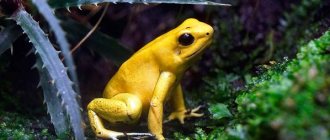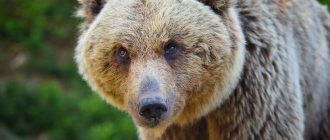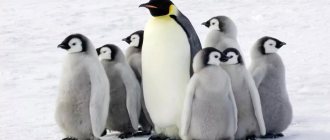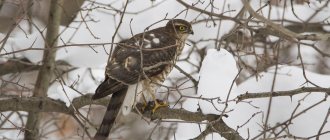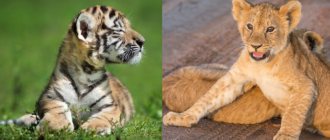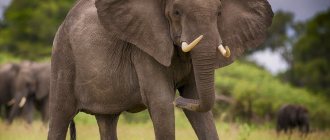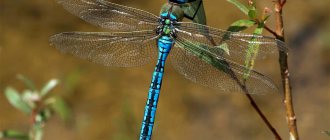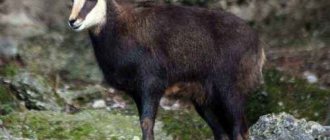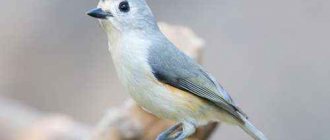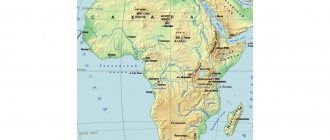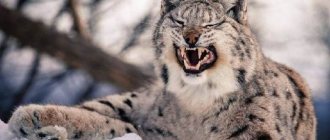Home to hundreds of thousands of species of fauna and the largest rainforest in the world, South America is a continent with varied climate zones, from glaciers to deserts. The flora and fauna of South America consists of a huge variety of unique animals, some of which have evolved in relative isolation. Only a few million years ago, the Isthmus of Panama was formed, providing a small migration corridor for South and North American animals. Below is a list and brief description of the prominent representatives of the fauna of South America, sorted into the following groups: mammals, amphibians, reptiles, birds, insects and fish.
Mammals
Agouti
Agouti is a rodent from the tropical forests of Central and South America, similar to a large guinea pig. Its coarse fur is coated with an oily substance that acts as a protective cloak. On the back of the body, the coat is longer. Agoutis have five toes on their front feet and three on their back feet. Like many rodents, they walk gracefully on their toes rather than on their entire foot.
Although difficult to see, the agouti does have a tail: it is very small, similar to a dark bean, glued to the back of the animal's body.
Andean or spectacled bear
The Andean bear of South America is also known as the spectacled bear and has characteristic light spots around the eyes that can look like glasses and stand out against the black or dark brown fur. These markings often extend across the animal's chest, giving each individual a unique appearance and helping researchers easily identify the species.
This is the only bear species in South America, with a body length of 1.5-1.8 meters and a weight of 70-140 kg. Males are 30-50% larger than females.
Armadillos
Armadillos have a really strange appearance. Although most armadillo species appear bald, they have hair on their sides and bellies (for example, the nine-banded armadillo).
These animals have a shell that consists of stripes. The number of stripes depends on the type of animal. Although the stripes are as tough as fingernails, the shell is flexible, with softer skin that expands and contracts between the stripes. Armadillos also have long claws for digging and searching for food. Their favorite foods are termites and ants.
Otters
Otters are the only serious swimmers in the mustelidae family. They spend most of their lives in water, so well adapted for this. Their sleek, streamlined bodies are ideal for diving and swimming. Otters also have long, slightly flattened tails that move from side to side and help them swim. The hind legs are used as rudder to steer the body in the water.
Giant anteater
The name is associated with the favorite food of this animal - ants. It has an elongated snout that resembles a tube. This unique animal of South America is the largest of the order of edentates. The Giant Anteater is similar in size to the Golden Retriever, but its thick, bushy hair makes it appear more massive.
The gray hairs of the anteater feel like straw and are especially long on the tail (up to 40 centimeters). It has a stripe of white, tan or gray that starts on the chest and extends to the middle of the back. Below this stripe is a dark collar. The hairy and bushy tail is often used as a blanket or umbrella. The giant anteater's elongated head and nose are excellent for catching ants and termites.
Mountain lion
This wild cat from the cat family (Felidae) has several names: mountain lion, puma, cougar. But no matter what you call it, it is still the same animal, the largest in the subfamily of small cats (Felinae). So why does the cougar have so many names? The fact is that they have a wide range of habitats, and people from different countries gave them different names.
Early Spanish explorers of the Americas called it leon (lion) and gato monte (mountain cat), hence the name “mountain lion.” “Puma” - this name comes from the Incas. The word “Cougar” comes from the old South American word cuguacuarana, which was shortened to the name cougar. All of these names are considered correct, but scientists tend to prefer the cougar. In Southern California, they are commonly called mountain lions.
Guanaco
Guanacos are graceful animals from the camelid family. They live throughout South America in dry, open mountainous areas or plains. Guanacos have a calm nature, so people began to domesticate them.
Everyone knows what a llama looks like, but what is a guanaco? They have a slender body, long legs and neck, and a height at the withers of 1.2 meters. These animals are shorter and smaller than their camel relatives. Although they appear slender, guanacos can weigh up to 120 kg. Sexual dimorphism is pronounced, males are larger than females. All individuals have thick, dense fur that can be light brown, brown-yellow, or rusty red. Their belly, chest and back of the legs are generally white; the head, ears and back of the head are gray. These colors help guanacos blend in with their grassland and desert habitats.
Capybara
The capybara is the largest rodent in the world, weighing from 34 to 65 kg, body length from 1 to 1.35 meters and a height at the withers of about 60 cm. It has long, light brown, thick fur and slightly webbed feet. It was originally thought to be some kind of pig, but it is now known that capybaras are rodents closely related to pigs.
Kinkajou
Kinkajou is found in tropical forests from southern Mexico to Brazil. Its small feet have slightly webbed toes that end in sharp small claws. The dense, thick coat acts as a water-repellent coat and helps keep the animal's body dry. The tail is longer than the head and body, densely furred and prehensile.
The scientific name of kinkajou is Potos flavus
. This roughly translates to “golden drinker” as it has a golden brown coat and loves nectar. The common name kinkajou comes from a word that means “honey bear,” as this slender animal is very fond of honey.
Small cats
Small cats are a subfamily of felines characterized by the inability of individuals to roar due to the special structure of the hyoid bone. Many of them have not been studied in their natural, wild habitat. This is due to its nocturnal lifestyle and remote habitat.
Representatives of the genus South American or tiger cats are found in South America.
Monkey
Pygmy Marmoset
Monkeys are magnificent, mischievous, and sometimes mysterious mammals. They have many different adaptations depending on their habitat. Most of them are woody. Other genera - macaques, baboons and mangabeys - are more terrestrial. All monkeys can use their arms and legs to move around on branches, but some tree monkeys also find use for their tails. Tails that are able to wrap around a branch and hold an animal are called prehensile tails, as they are very flexible and can grab small objects, such as peanuts.
The pygmy marmoset is one of the smallest primates in the world. The body weight is 100-150 g, the body length to the base of the tail is 11-15 cm, and the tail length is 17-22 cm. They can be found in the canopies of rain forests in South America. The tail is not prehensile, but helps to maintain balance when jumping from tree to tree. The pygmy marmoset can jump up to one meter in length. They move on all limbs.
Marsupials
The white-bellied opossum is a member of the opossum family, the infraclass marsupials.
They are an infraclass of mammals known as marsupials. The cubs of these animals are born underdeveloped, and then grow in the mother’s pouch, where it is warm and safe. Immediately after birth, the baby attaches itself to the mother's nipple and does not let go until it gains the required weight and becomes stronger.
Most female marsupials have a pouch, which looks like a pocket and opens at the top, and in some species, near the tail. All marsupials have good hearing and sense of smell. They live on the ground, some species climb trees well and are skilled swimmers. One of the species of marsupials living in the vastness of the South American continent is the white-bellied possum (see photo above).
Jaguar
Smooth-haired, powerful and elusive, jaguars are revered animals throughout South America. Their mesmerizing gaze and hunting prowess have earned them a prominent place in mythology and legend. Beauty, strength and adaptability inspire respect for these animals.
Jaguars are the largest cats in the New World. Their images are found in ruins throughout the Yucatan Peninsula, where they were a major figure in religious rites. They can live both in trees and on the ground and hunt during the day and at night. Today, the jaguar is still considered a symbol of power, strength, beauty and intelligence.
Kinkajou
The animal loves honey, which is why it got the name “kinkajou,” which translates as “honey bear.”
But the kinkajou is not at all unlike bears and belongs to the raccoon family. The length of the animal is from 43 to 56 cm, slightly bulging large eyes, round head and ears. The coat is dense and short, brown on the back and slightly lighter on the belly. Many individuals have a dark stripe on their backs.
In addition to honey, it feeds on plants, fruits, insects and small animals, and does not disdain eggs and chicks. These are solitary nocturnal animals, meeting with relatives only for reproduction.
Amphibians (amphibians)
Legless amphibians
Legless amphibians are tropical amphibians that resemble large worms or slithering snakes. They have no limbs, and sometimes it is difficult to determine where the head is and where the tail is. Their skin is smooth and shiny, gray, brown, black, orange or yellow. Some species have tiny, scales.
Most individuals live in tunnels underground. The hard, thick, pointed skull helps these amphibians dig in soft mud. Due to their underground lifestyle, they have a low need to see or hear. Thus, their eyes are tiny in some species or hidden under the skin or skull, while in other species they look like tubercles.
Representatives of the following families live in South America: Rhinatrematidae, Caeciliidae, Typhlonectidae, Siphonopidae, Dermophiidae.
Anurans
Darter frogs are the colorful and venomous members of the anuran order of South America.
There is a huge variety of anuran species, each adapted to life in its own unique habitat, be it steep mountain slopes, scorching deserts or tropical forests. Depending on the species, they can be found in water, on the ground or in trees, and come in a variety of sizes and colors.
Dart frogs are a family of poisonous frogs, from the class Tailless. They are known for their vibrant colors, which include the following color combinations: red and black, yellow and green, orange and silver, blue and yellow, green and black, pink and silver. Their bright coloring is not an indicator of beauty, but a warning that they are poisonous.
They are tiny, terrestrial, diurnal frogs that live primarily in leaf litter on the forest floor, but some species live high in forest canopies and may never come down. Their homeland is rain forests near rivers or ponds in Central and South America.
Dart frog venom can cause severe swelling, nausea, and muscle paralysis. If a predator survives after eating such a frog, it will remember its mistake and will not try to dine on something similar in the future. However, there is one snake, Leimadophis epinephelus, that is immune to frog venom and feeds on these small creatures.
Rare monkeys
There is a wide variety of primates among the fauna of South America. Their habitat is the tropics and subtropics. Notable inhabitants of Argentina, southern Mexico and Latin America are:
- Mirikina. The animal has a small size from 28 to 40 cm and weight from 0.7 to 1.3 kg. Monkeys are active only at night due to their visual acuity. They cover a distance of up to 5 meters in a jump. Food for animals includes fruit reserves on trees, small birds, insects and frogs. Capable of producing interesting sounds;
- Uakari. An unusual monkey, devoid of attractiveness. It is among the endangered species. Shows activity during daylight hours. The body length is 50−60 cm. Animals live in trees in groups of several. They feed on plants and bugs. They have long fur with an orange tint and a red muzzle;
- Saki. They live in the tropical zone. They do not tolerate moisture well, so they practically do not come down from the trees. They look unusual: the body is covered with black hair, and the face is covered with light fur;
- Howler. Settles in mountain forests. The animal's height is 1 meter and its weight is from 8 to 9 kg. Primates live comfortably only in trees. They have a thick, long cover of black or red color. The monkey's coordination of movements is regulated by its long tail. They feed only on vegetation.
Reptiles (creeping things)
Anaconda
The name anaconda actually refers to a genus (Eunectes), but is most often used to refer to a single species, the green or common anaconda. A member of the Boidae family, the green anaconda from South America is the heaviest snake in the world and has the largest circumference proportionate to length of any snake.
The green anaconda is typically brown-green, olive, or grayish-green in color with oval black spots. The Bolivian anaconda is similar to the green anaconda, but is found only in a small area of Bolivia. The Paraguayan anaconda has a pattern of blotches, saddles, spots and stripes (usually black or dark brown) on a yellow, golden brown, or chartreuse background. The dark-spotted anaconda is about the same size as the Paraguayan anaconda and has large dark spots.
Iguana
Iguanas are among the largest lizards found in North and South America. Their tail is about half the length of their body. Like other reptiles, iguanas are cold-blooded, oviparous animals with an excellent ability to adapt to their environment. Iguana species vary greatly in size, color, behavior, and their conservation status. Some species, like the common iguana, are quite abundant, while others are endangered.
Crocodiles
The cold-blooded, thick-skinned, egg-laying ancient order of crocodiles (Crocodilia) inspires terror in some people, admiration in others, and perhaps both. The fact is, members of the crocodilian order - alligators, crocodiles, caimans and gharials - are a misunderstood group of animals, most of which face serious threats to their habitat and are also hunted by humans for their skin. Of the 23 species of crocodilians, 7 are endangered, and almost all are threatened with extinction in some part of their range.
Emerging about 230 million years ago, they have survived dinosaurs, the Ice Age, and more, but have changed little over time. Interestingly, crocodiles are more closely related to birds and dinosaurs than most living reptiles. Scientists have placed crocodiles and alligators into different families based on key differences between them.
The Orinoco crocodile is not only the largest reptile in South America, but the largest animal on the continent. The body length of these reptiles can reach more than 5 meters, and their weight is about 400 kg.
Elephant or Galapagos tortoise
Galapagos tortoises are the largest land tortoises in the world among living reptiles. Males can weigh more than 227 kg, while the average weight of females is about 113 kg. They have thick, strong legs to support their body weight, but spend a lot of time lying down to conserve energy. The color of the shell is light brown. In different populations, the shell comes in two types - dome-shaped and saddle-shaped. The dome-shaped shell is found in individuals living in high mountain areas with lush pastures. The saddle-shaped shell allows the turtle to bend better to reach sparse vegetation high above the ground or stretch its neck to feed on shrubs and cacti.
Cinchona
If any continent can still surprise the seasoned traveler, it is South America.
The plants and animals here are truly outlandish. The cinchona tree alone is worth something. By the way, it became famous thanks to the healing properties of its bark, which the natives used to treat malaria. The tree is named after the wife of the Viceroy of Peru, who was cured of fever with cinchona bark in 1638.
The height of the tree reaches 15 meters, the evergreen leaves are shiny, and inflorescences of pink or white flowers are collected at the ends of the branches. The entire crown has a reddish tint. Only the bark of the tree is medicinal. Now the so-called cinchona grows in many parts of the world.
Birds
Andean condor
The Andean condor is the largest flying bird in South America. It is distributed in the majestic mountains and valleys of the Andes. Body weight ranges from 7.5 to 15 kg. The length of an adult varies between 117-135 cm. Sexual dimorphism is pronounced, males are larger than females, have a characteristic crest on the top of the head and yellow eyes. Females have red eyes and no crest. The feather color is black, and there is a fluffy white collar on the neck. The secondary feathers are light. The beak is elongated and rounded.
Ibises
Ibises are wading and terrestrial birds of medium to large size. They have long necks and legs, and males tend to be larger than females and have longer beaks.
From the ibis family, the following species are common in South America: red and white ibises from the genus Eudosimus, spectacled and slender-billed ibises from the genus Plegadis, representatives of the genera Theristicus, Cercibis, Mesembrinibis, Phimosus.
Hummingbird
The hummingbird family includes the smallest birds in the world, and is one of the most numerous (consisting of more than 330 species). These fascinating birds are found in deserts, mountains and plains, but most of them live in tropical forests. All species are native to the Americas and can migrate between continents. They make a buzzing sound, which is produced by flapping their wings frequently; each species makes a different buzzing sound, depending on the speed of the wing beats. Hummingbirds, with their small weight, are able to fly in wind and rain.
Pelicans
Pelicans are quite easy to identify, because they are the only birds that have a pouch under their beak, used for catching fish. Pelicans are large birds with short legs and are quite clumsy on land. Their webbed feet make them excellent swimmers. Birds use their beaks to coat their feathers with waterproof oil from a gland at the base of their tail.
Pelicans are excellent fliers, but in the absence of wind, flying can be challenging for these birds. To gain sufficient speed to take off, a pelican must run through the water, flapping its large wings and kicking its legs.
The species Pelecanus thagus is found in South America, which until 2007 was considered a subspecies of the American brown pelican. It prefers rocky coastlines, as opposed to trees. The population numbers about 500 thousand individuals.
Parrots
Currently, there are up to 350 species of parrots. Although the species are very different from each other in many respects, all parrots have a curved beak, a special structure of fingers, and feed on nuts, seeds, fruits and insects. Parrots have thick, strong beaks that are ideal for crushing tough nuts and seeds.
In South America there are parrots from the subfamily Psittacinae.
South American harpy
The South American harpy is a legendary bird, although few have seen it in the wild. This dark gray bird of prey has a very distinctive appearance. When the bird feels threatened, the feathers on the top of its head rise up, forming a collar of “horns.” Small gray feathers form a disc around the head, which improves the bird's hearing, like owls.
Like most species of hawks, the female harpy is almost twice the size of the male. The legs of the South American harpy can be as thick as a small child's wrist, and the curved rear claws are larger than those of a grizzly bear, measuring about 13 centimeters in length. The harpy is not the largest bird of prey on the continent (that title belongs to the Andean condor), but it is still quite a heavy and powerful creature.
chocolate tree
The cocoa tree is native to South America.
Its seeds are used to make chocolate, hence the name. For the sake of these seeds, the species is now cultivated all over the world. The tree reaches a height of 8 meters and also has large dark green leaves and small pinkish-white flowers collected in inflorescences.
It blooms and bears fruit almost all year round. Fruit ripening occurs from 4 to 9 months. The lifespan of a tree is 25-50 years.
Insects
Butterflies
butterflies
, found on every continent except Antarctica, and these insects come in a wide variety of colors and sizes. The largest species can reach 30 centimeters in diameter, while the smallest are no larger than the head of a match.
The most famous butterflies of South America are day butterflies from the genus Morpho, butterflies from the genus Greta.
Hercules beetle
This species is one of the largest beetles on the planet. The body length of an adult varies from 80 to 170 mm. The body is covered with short hairs. The beetle's elytra are yellow-olive in color. There are horns on the head and pronotum.
Ants
Ants are one of the most common insects on earth, and their contribution to the ecosystem is important.
One of the brightest inhabitants of the mainland is the large tropical ant Paraponera clavata, which has a very strong poison, surpassing in strength the poison of any wasps and bees. Body length 18-25 mm, color brown-black.
The largest and smallest animals on the continent
Animals in tropical areas are typically characterized by gigantism. The warm climate provides a rich food supply. There is something to eat on.
Orinoco crocodile
It is slightly larger than the black caiman. In theory, the Orinoco crocodile should be on the list of dangerous ones. However, the species is on the verge of extinction. The small number excludes mass attacks on people.
Male Orinoco crocodile weights reach 380 kilograms. The length of some individuals reaches almost 7 meters.
Orinoco, one of the largest species of crocodiles
Guanaco
The largest mammal on the continent. You could argue since the jaguar is bigger. However, the wild cat is also found outside of South America. Guanaco is found only here.
The guanaco is the ancestor of the llama. The animal gains weight up to 75 kilograms and lives in the mountains.
Noblela
This is already an animal from the list of miniatures. Noblela is a high-altitude frog that lives in the Andes. Adults are about a centimeter long.
Female nobles lay only 2 eggs, each one-third the size of an adult animal. There is no tadpole stage. The frogs hatch immediately.
Lilliput beetle
The smallest beetle on the continent. The length of the animal does not exceed 2.3 millimeters. Usually the indicator is 1.5.
The Lilliputian beetle is a recently discovered species. Externally, the insect is brown with hairy legs and three-lobed horns.
Hummingbird
Represents miniature birds. The length of the body, including the tail and beak, does not exceed 6 centimeters. The weight of the bird is 2-5 grams. Half of the volume is occupied by the heart. The bird has it more developed than anyone else on Earth.
The heart of a hummingbird beats 500 times per minute. If the animal is actively moving, the pulse increases to a thousand beats.
Arachnids
Spiders
Spiders have a bad rap and are feared by many people. But only a few species are dangerous to humans, and they bite if they sense danger. Spiders are not classified as insects due to certain anatomical differences. For example, spiders have two main body parts: the anterior part is called the cephalothorax, and the posterior part is the undivided abdomen; insects have three body parts: head, chest and belly. Spiders have eight legs, while insects have six.
Tarantula spiders from the family Theraphosidae are among the largest spiders in the world. They are found not only in South America, but also on other continents with the exception of Antarctica. Their diet is quite varied and, contrary to their name, they do not always feed on bird meat. All species have poison, but in varying amounts. The poison is not fatal for an adult and healthy person, which cannot be said about small children and people sensitive to it.
Scorpios
Scorpions belong to the order of arthropods. They prefer hot climates and lead a terrestrial lifestyle. There are about 1,750 species of scorpions, but only 50 are dangerous to humans due to their venom. Six pairs of limbs are attached to the cephalothorax, four of which are intended for movement.
These are viviparous animals; they undergo a life cycle without metamorphosis. Scorpions are nocturnal and can run fast. The diet consists of insects and arachnids. The venom of most species is harmless, but some are dangerous and can cause death, especially in children.
Scorpions from the following families are found in South America: Buthidae, Chactidae, Scorpionidae, Euscorpidae, Hemiscorpiidae, Bothriuridae.
South America - a territory of contradictions
Climatic zones of South America
The territory of the controversial continent, which ranks fourth in area on the globe, is literally crammed with contrasting natural zones. After all, the hot steppe of Pampa stretches through the countries of Uruguay and Argentina, where the livestock farming system is based. But on the island of Tierra del Fuego, which is under the partial jurisdiction of Chile and Argentina, cold weather with constant stormy winds from the Atlantic prevails. It is a completely different matter in the west, where there are fertile valleys with a cool climate that arose in the Andes mountain system. The picture of contrast is added by the presence on the continent of the hottest place on Earth (the Atacama Desert) and at the same time the functioning of one of the deepest river basins in the world (the Amazon) with impenetrable jungle.
Interesting: Pisces are the masters of water. Description, photo and video
Fish
Arapaima
Arapaima is considered one of the largest freshwater fish on the planet, with a body length of about 2 meters. The body of the fish is long and slightly flattened, covered with scales. It is common in the Amazon River. The diet consists of fish, small animals and birds.
Common piranha
The common piranha is a species of fish that has gained a reputation as a dangerous predator for people and animals. The body length varies from 10 to 15 cm, and the weight ranges from 1 kg. This fish is characterized by flat and sharp teeth, which they use to bite into their prey. They have a very subtle sense of smell, thanks to which piranhas can recognize blood from a great distance. Their diet consists of fish and birds.
Hevea brasiliensis
A unique tree that is a source of natural rubber, which is contained in the milky sap (latex). Latex is found in all parts of the rubber plant.
This is an evergreen tree up to 30 meters high with a straight trunk up to 50 cm thick and light bark. The leaves are leathery, trifoliate, pointed, oval in shape and collected in bunches at the ends of the branches.
Foliage changes occur annually. The species belongs to monoecious plants with unisexual small flowers of white-yellow color, collected in simple inflorescences. The fruit with dense ovoid seeds is a tricuspid capsule.
Geographical position
The continent is located in the equatorial, subequatorial, tropical, subtropical and temperate climatic zones. The continent is entirely located in the Western Hemisphere, most of it located below the equator. The continent is washed by the waters of the Atlantic and Pacific Oceans.
Extreme points of the continent:
- northern - Cape Gallinas.
- southern - Cape Forward.
- western - Cape Parinhas.
- eastern - Cape Cabo Branco.
Unusual islands of Lake Titicaca
Unique animals live not only in the Andes, but also in the areas of Lake Titicaca. Only here you can meet the Titicaca whistler and the wingless great grebe.
The Titicaca whistler is a frog endemic to Lake Titicaca.
Lake Titicaca is unusual for its floating Uros islands. According to legend, small tribes of Uros Indians settled on floating islands several thousand years ago in order to separate themselves from other peoples. These Indians themselves learned to build islands out of straw.
Each Uros island is formed from several layers of dry reeds, with the lower layers being washed away over time by the current, but the upper layers are constantly renewed. The islands are springy and soft, and water seeps through the reeds in some places. The Indians build their huts and make balsa de totora boats, also from reeds.
The Great Great Grebe is a bird that visits Lake Titicaca from time to time.
Today there are approximately 40 floating Uros islands on Lake Titicaca. Moreover, some islands have observation towers and even solar panels to generate energy. Excursions to these islands are very popular among tourists.
Puma
The puma is a large predator, a representative of the cat family. The animal’s body length is 100-200 cm. Weight is 800-100 kg. The only animals larger than the puma are the jaguar, lion and tiger.
Cat cubs are born spotted; by the first year of life, the spots disappear, and the animal becomes monochromatic. Puma milk is 6 times fattier than cow's milk.
This is interesting! On the plain, a puma can reach speeds of up to 65 km/h, but it quickly gets tired and, if chased, tries to quickly climb a tree.
Pumas adapt to any natural conditions: they live in mountain, coniferous, and tropical forests. Their range is limited only by the lack of food and shelter. The puma feeds exclusively on food of animal origin. The puma's pursuit of prey ends with a positive result in 82% of cases.
- 32 facts about tigers
- Weasel
- Whale shark
- 34 facts about raccoons
- Maned wolf
- Nettle
The cat is active both day and night. The time of wakefulness and hunting depends on hunger. The animal easily climbs trees and rocks in search of prey, and easily climbs mountainous terrain.
Also, cougars can purr like domestic cats.
Climate by season
South America is located almost entirely in the Southern Hemisphere and its seasons are completely opposite to those of the Northern Hemisphere.
The summer period here runs from October to March. During this period, the air temperature can fluctuate from 15 to 35 degrees above zero. During the daytime it is hot and dry here; at night, as a rule, there is a significant drop in temperature; in the mountains the temperature can drop below zero. In summer, the most precipitation falls here.
The weather in winter may differ in different climate zones, although in general the annual amplitude of temperature fluctuations on the mainland is not very large. In the mountains in winter the temperature can be below zero and snow often falls. The average temperature on the mainland, as a rule, is 16-24 degrees above zero.
The autumn and spring seasons are very weakly expressed; weather conditions during these periods may also differ depending on the climate zone, however, all zones are characterized by a humid, warm climate, with an average temperature of about 10-25 degrees Celsius.
Precipitation
South America is the wettest continent on the planet. This is due to its location: most of it is located in the equatorial zone. In the Amazon River Valley, about 3,000 mm of precipitation falls annually in the form of rain.
To the north of the equatorial belt, not far from the ocean, there is a subequatorial zone, mostly occupied by variable equatorial forests. There is a little less precipitation here, but it is still quite a large amount - 1000-2000 mm per year.
The least amount of precipitation falls inland, in the savannah zone: here the amount of precipitation does not exceed 500-1000 mm per year.
Lizard
Lizards are reptiles from the order of reptiles. The species is distributed throughout the continent.
There are lizards with developed limbs and legless ones. Legless ones are very easy to confuse with snakes - only an experienced biologist can distinguish them.
Most lizards are predators: they feed on mollusks, frogs, birds and small mammals. Sometimes they attack large animals - wild pigs, deer.
Some species of lizards are herbivores (iguanians, skinks). They eat the pulp of ripe fruits, leaves, and flowers.
Video
Relief
The continent's topography is extremely diverse. The continent can be conditionally divided into two parts: the lowlands of its Western part and the mountains of the East.
In the west is the largest Guiana Plateau - its length is 1,600 kilometers. Here is the world's highest Angel Falls, whose height is about 950 meters.
There are also dense tropical forests and many gorges here.
Here, in the west of the continent, there are two more large lowlands: the Amazonian (formed due to its location near the Amazon) and the Guiana Plateau.
In the east of the continent is the longest mountain range on the planet - the Andes. Its length is about 10 thousand kilometers, and its highest point is Aconcagua, 6969 meters. Due to volcanic activity, mountain building continues here to the present day. The last significant volcanic eruption was recorded in Chile in 2010.
Jaguar
Jaguar is a predatory mammal of the panther genus. Outwardly similar to a leopard, but much larger.
The main habitats of the animal are tropical and mountain forests, the ocean coast (where the cat looks for turtle eggs).
This is interesting! Jaguars can forage for food in water and are excellent swimmers and divers.
Jaguars do not like intrusion into personal space and have a threatening attitude towards representatives of other felines. Therefore, the territory per animal ranges from 25 to 50 square meters. km.
The diet of jaguars includes waterfowl, snakes, rodents, monkeys, opossums, and livestock.
Important! The jaguar is a non-aggressive animal towards humans. It can follow people in the forest out of curiosity without attacking. Although occasionally there are cases of attacks.
Lama
At the foot of the Andes lie tropical rainforests. As you climb up the mountain, deciduous and coniferous forests are replaced by shrubs and herbs. Here, at an altitude of 3500-5000 m above sea level, the llama, a mammal from the camelid family, grazes.
In appearance, llamas have much in common with camels. The head is small, the ears are high and pointed, the fur is medium length and soft to the touch.
The animal was domesticated 4,000 years ago by the Indians of the central Andes (present-day Peru). It is used to this day for transporting goods in mountainous areas where no vehicle can climb.
Only adult males are loaded. If the load is too heavy, the llama will not move. When trying to punish, he will spit at the driver.
Variably humid forests
Ceiba
This zone is located along the edges of the equatorial forests, and also occupies the northeastern part of the continent and the central part of the Atlantic coast.
| Climate | Soil type | Vegetable world | Animal world |
| Subequatorial and tropical | Yellow soil and red soil | Bamboo, araucaria, ceiba, coconut palm | Similar to the equatorial rain forest zone, but has less species diversity |
A feature of variable-humid forests is the seasonal change in climate, deciduous trees appear, and the lower tiers of the forest are more diverse. The soil contains more nutrients that are not washed away by regular rains.
Population
The total population is about 422 million people. The ethnic composition is very diverse: about 250 different races live here. Such a wide variety is due primarily to the history of the continent.
The inhabitants of the mainland can be divided into representatives of three races:
- equatorial (indigenous population - Indians);
- Caucasoid (descendants of European conquerors);
- Negroid (descendants of slaves brought from Africa).
In addition, representatives of mixed races live here:
- mulattoes (a mixture of Europeans and Africans);
- mestizos (a mixture of Europeans and Indians);
- sambo (a mixture of blacks and Indians).
Rapid mixing of peoples began to occur after the capture of the mainland by the Spaniards and Portuguese. Before that, five centuries ago, only indigenous Indian tribes lived here. The import of slaves from Africa was of great importance for the ethnic and cultural development of the continent: they brought their own special flavor.
Maned wolf
The maned wolf is a predatory member of the canine family. It has an unusual appearance, more like a fox than a wolf. The animal has disproportionate sizes of body parts: the body is short - 120-130 cm, the legs are very long - 75-85 cm, high ears and a short tail. The weight of the wolf is 20-25 kg.
The animal can be found in the savanna, on grassy and shrubby plains. The animal's diet contains food of animal and plant origin: small rodents, birds, reptiles, bananas, guavas.
Maned wolves are monogamous: they choose a mate for life.
Extinction
The fauna of the mainland is distinctive. Many of the animals existed and evolved for a long time in conditions of isolation; in addition, the local climate is truly unique. Therefore, the habitat of some animals is possible only on this continent. Significant deterioration of the ecological situation on the mainland threatens the future life on our planet of hummingbirds, pelicans, pumas, maned wolves, and some species of monkeys. Many animals are listed in the Red Book.
Ecological situation
Currently, the continent's environmental security is under threat. Most countries on the continent are underdeveloped, and therefore do not use modern technologies to preserve nature.
Uncontrolled deforestation, which serves as the lungs of our entire planet, leads to the fact that many animals lose their home. A similar situation arises with water bodies: their pollution with household waste has already led to the death of many of their inhabitants.
